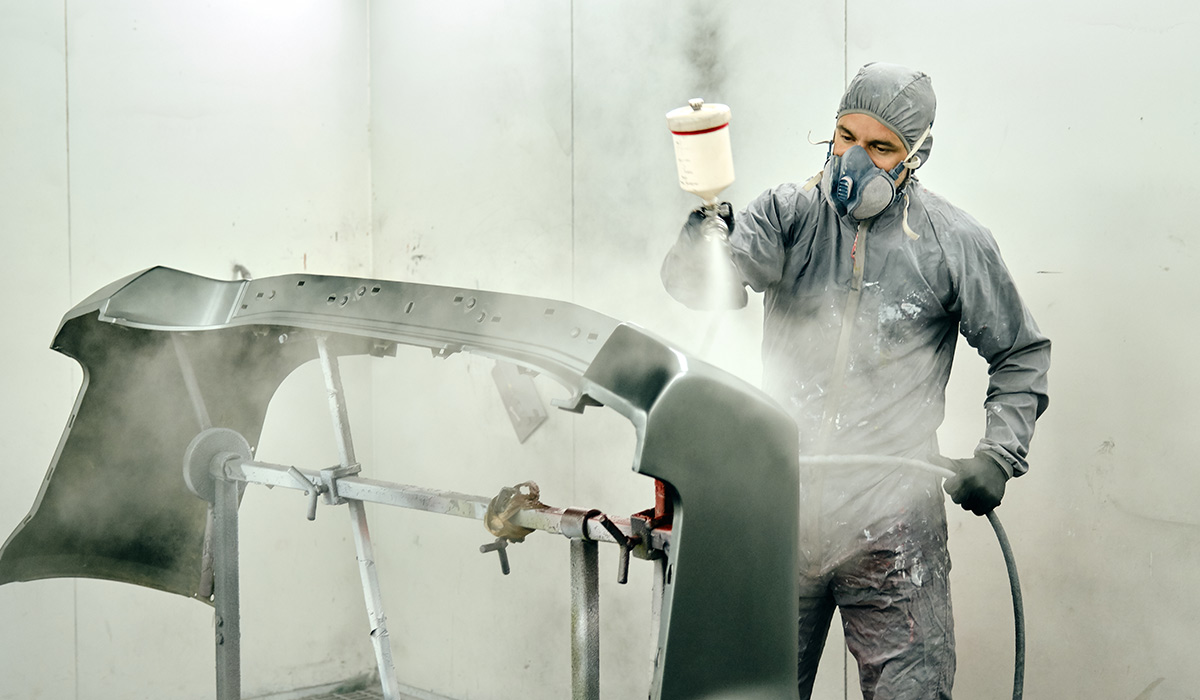Consistent testing controls the risk of paint defects from protective gloves in the automotive industry

Gloves are essential PPE in assembly plants, but they can also inadvertently contain paint-wetting impairment substances (PWIS) that leave marks on a car’s bodywork. This blog highlights an internationally recognized test procedure known as VDMA 24364 that can help resolve this potentially costly issue.
Assembly lines in car plants are fast-paced operations where the accuracy of the work undertaken is critical. Any stoppages to resolve production issues will be costly, but some may not be immediately apparent and only surface later.
One such issue is defects (e.g. craters) that appear on a car’s external surface, which can happen when paint is applied to the bodywork. These are caused by what is known as (PWIS) and there are many sources.
Frustratingly, protective gloves, which are critical in safeguarding employees in the workplace, are one of the culprits. Sometimes gloves contain silicone – a well-known PWIS – or may have been contaminated by other PWIS. When a PWIS comes into contact with a car’s surface, it will likely damage the paint coating, resulting in visible marks.
Car manufacturers worldwide have long been aware of this quality issue and have implemented different control measures to mitigate the risk.
First aligned test protocol to control PWIS
The German Association for Mechanical Engineering (Verband Deutscher Maschinen- und Anlagenbauer or VDMA) has sought to encourage greater consistency throughout the industry by developing the first aligned test.
Its VDMA 24364 procedure aims to provide a universal approach to managing PWIS (known in German as LABS), effectively reducing their risk, especially in sensitive areas where cross-contamination is a significant concern.
For this reason, VDMA’s test focuses mainly on the pre-treatment, paint application, and drying processes, which it classifies as zone 1 to denote that they are the most high-risk activities. It also identifies two product groups that can cause cross-contamination and, therefore, paint defects.
When testing protective gloves to see if they contain or have been contaminated with PWIS, VDMA 24364 specifies using Butyl acetate. This substance is applied to the glove being tested and then rubbed on a glass test plate. The idea here is that the test plate simulates the part of the car’s bodywork that needs painting.
To qualify its effectiveness as a control measure, the test requires that this procedure is followed each time with a new specimen. If it is successful, there will be no visible defects on the glass test plate.
Raising industry standards
The VDMA test has arguably raised awareness. This change is most evident in the ever-increasing number of companies globally implementing it—more than 300 to date. Midas Safety is one of them and has adopted the procedure to test its range of protective gloves.
For that growing body of adoptees, there is an additional requirement to produce a declaration of conformity to demonstrate a successful test. This assertion is critically important because the product labelling that forms part of the declaration assures the glove user that it has met VDMA 24364’s high protocol.
However, that may not be enough for some. The risk that gloves potentially pose in causing defects has led some automotive industry operators to insist that only silicone-free gloves are sourced.
Unfortunately, as sensible as this might sound, it is not a foolproof approach. Many other PWIS substances besides silicone are present in assembly plants, so banning silicone gloves from sensitive areas won’t prevent defects through cross-contamination.
Also, even gloves that claim to be entirely silicone-free can be shown to contain elements. However, it’s important to note that when tiny traces of silicone are present, no impairment may result from close contact.
VDMA’s test procedure may not be a legal requirement. Yet, its significant global adoption underscores its importance in offering the most comprehensive and practical control measure for managing PWIS to date.